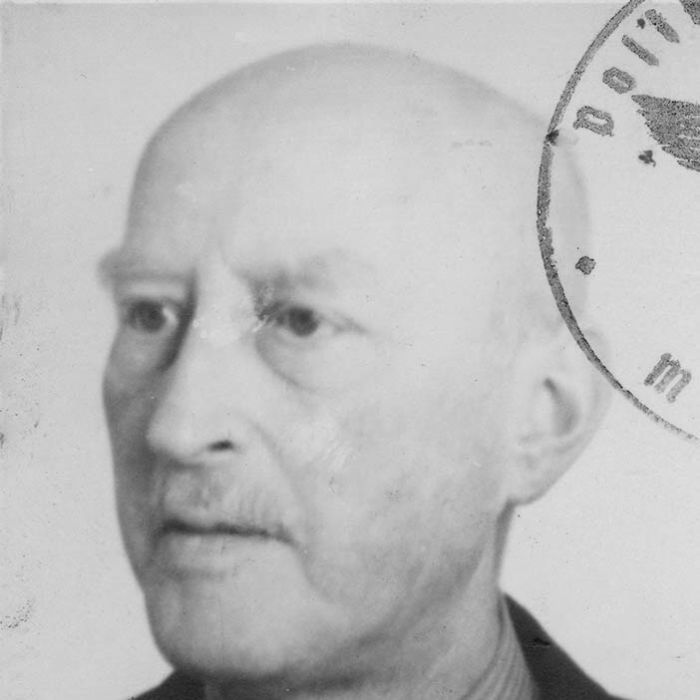Julius Davidsohn was born in Hanover on February 8, 1874, the son of merchant Daniel Davidsohn and his wife Regina, née Rosenberg. He attended the Höhere Bürgerschule. In 1901, he married Semaya Hirsch, who was five years his junior. The couple had a child named Simibu, about whom nothing is known. It was declared dead on May 5, 1945.
Before the First World War, Julius Davidsohn was Director of the graphite mine in Untergriesbach in the district of Passau. He fought on the front between 1916 and 1918. After first living in Berlin, Julius and Semaya Davidsohn moved to Munich in 1917, where they lived at Widenmayerstraße 45 from 1920. From 1928 to 1930 Julius Davidsohn was a partner in the advertising firm Rewag – E. Batz & Co.
The lives of Julius and Semaya Davidsohn changed radically after the Nazi seizure of power. In the “Kristallnacht” pogroms of November 9-10, 1938 the Gestapo (Secret Police) arrested Julius Davidsohn and interned him for ten days in Dachau concentration camp. On November 25, 1938 the Gestapo confiscated nine works of art in the couple’s apartment. Like many other Jewish women and men, Julius and Semaya Davidsohn also had to deliver jewellery and silver items to Städtisches Leihamt (municipal loan office) in Munich. In September 1939, they had to leave their home in Widenmayerstraße and move into one room in a “Jew house” at Leopoldstraße 52 a. In late 1941, the Gestapo crammed them into the “Heimanlage für Juden” (“home facility for Jews”), a mass accommodation at Clemens-August-Straße 9. 67 year-old Julius Davidsohn had to work as a forced laborer. Six months later, on June 17, 1942, the Gestapo deported Julius and Semaya Davidsohn to Theresienstadt ghetto. Julius Davidsohn died there on August 11, 1942 as a result of the catastrophic conditions to which especially older people were exposed. Semaya Davidsohn died on April 24, 1943, likewise in Theresienstadt ghetto.
It was not until 2019, some 80 years after their murders, that the objects stolen from Julius and Semaya Davidsohn could be restored to their heirs by the Bavarian museums Bayerische Staatsgemäldesammlungen, Bayerisches Nationalmuseum and Staatliche Graphische Sammlung.(text Dr. Andrea Bambi, editor C. Fritsche, translation Catherine Hales)






-Davidsohn_image.jpg/jcr:content/EZ_BILD_15554.jpg)